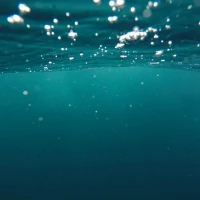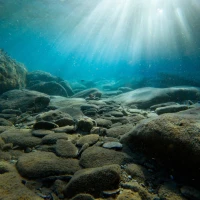Snorkeling is a popular water activity that allows people to explore marine life and the vibrant underwater world. Whether you are a beginner or an experienced snorkeler, it is important to know and follow some essential tips and tricks to ensure a safe and enjoyable diving experience. In this article, we will discuss everything you need to know about snorkeling, from choosing the right equipment to mastering snorkeling techniques and exploring the underwater wonders. So grab your snorkel gear and let’s dive in!
Why Snorkeling?
Snorkeling is a great way to experience the beauty and diversity of marine life without the need for complex scuba diving equipment and certification. It offers a unique opportunity to explore coral reefs, swim alongside colorful fish and other fascinating marine creatures, and witness the breathtaking underwater landscapes. Snorkeling is not only a fun and exhilarating activity, but it also provides numerous health benefits. Swimming in the ocean and immersing yourself in nature can reduce stress, improve cardiovascular health, and enhance overall well-being.
Essential Snorkeling Equipment
Before you dive into the water, it is crucial to have the right snorkeling equipment. Here is a list of essential gear you will need for a memorable snorkeling experience: best secret places to visit
1. Snorkel Mask
A snorkel mask is one of the most important pieces of equipment for snorkelers. It allows you to see underwater while keeping your face dry. When choosing a snorkel mask, opt for one that fits comfortably and provides a clear field of vision. Look for masks with a silicone skirt, which creates a watertight seal, and lenses made from tempered glass for durability and clarity.
2. Snorkel
A snorkel is a tube that allows you to breathe underwater while keeping your face submerged. It is attached to the snorkel mask and should fit securely in your mouth without causing discomfort. Consider choosing a dry snorkel, which has a valve at the top to prevent water from entering the tube. This feature can be particularly useful if you dive below the water’s surface.
3. Fins
Snorkeling fins, also known as flippers, are designed to help you swim more efficiently and effortlessly in the water. They provide propulsion and improve maneuverability, allowing you to cover greater distances and navigate through currents. When selecting fins, ensure they fit snugly but not too tight, as this can cause discomfort. Look for fins with an open-heel design, which allow you to wear booties for added comfort and protection.
4. Wetsuit or Rash Guard
The choice of wearing a wetsuit or a rash guard largely depends on the water temperature and personal preference. If you are snorkeling in colder waters, a wetsuit will provide insulation and keep you warm. In warmer climates, a lightweight rash guard can protect your skin from the sun, jellyfish stings, and other potential irritants.
5. Buoyancy Aid
While not essential for all snorkelers, a buoyancy aid can provide extra safety and comfort, especially for beginners or individuals who are less confident swimmers. A snorkel vest or a floatation device can help you stay afloat effortlessly, conserve energy, and focus on observing the underwater wonders.
Choosing the Right Snorkeling Location
Selecting the right snorkeling location is crucial for a memorable and rewarding experience. Here are some factors to consider when choosing where to snorkel:
1. Water Clarity
Opt for snorkeling spots with clear and transparent water. Good water clarity allows for better visibility, making it easier to spot marine life and appreciate the underwater environment. Avoid snorkeling in areas with high sedimentation or poor water quality, as this can significantly reduce visibility and the overall experience.
2. Marine Life Diversity
Look for snorkeling locations known for their rich biodiversity. Coral reefs are often a hotspot for a wide variety of fish species, colorful corals, and other fascinating marine organisms. Research the local marine ecosystem and choose areas known for their diversity to maximize your chances of encountering a vibrant underwater world.
3. Accessibility
Consider the accessibility of the snorkeling location. Some places may require a long boat ride, while others can be accessed directly from the shore. Think about your preferences and abilities when deciding on the ideal location. Additionally, check if there are facilities such as restrooms, showers, or nearby amenities to make your snorkeling excursion more comfortable.
4. Safety Considerations
Ensure that the snorkeling location is safe and suitable for your skill level. Check for any potential hazards such as strong currents, sharp rocks or corals, and dangerous marine life. It is also important to snorkel in areas protected by local conservation efforts to promote sustainable tourism and protect the marine environment.
Preparing for Your Snorkeling Adventure
To maximize your snorkeling experience, proper preparation is key. Here are some essential tips to help you get ready for your adventure:
1. Research and Plan Ahead
Before embarking on your snorkeling adventure, research the local snorkeling spots, weather conditions, and any regulations or permits required. Some snorkeling locations may have specific rules to protect the marine life or sensitive ecosystems. Planning ahead will ensure a smooth and hassle-free experience.
2. Learn Basic Swimming Skills
Although snorkeling does not require advanced swimming skills, it is important to be comfortable and confident in the water. Before your trip, practice basic swimming techniques such as floating, treading water, and using different stroke styles. This will enhance your safety and enjoyment while snorkeling.
3. Practice Breathing Techniques
Breathing through a snorkel tube can take some getting used to. Practice breathing through a snorkel in shallow water before venturing into deeper waters. Familiarize yourself with the breathing rhythm and learn how to clear any water that may enter the snorkel.
4. Master Snorkeling Techniques
To make the most of your snorkeling experience, it is essential to master some basic techniques:
-
Clearing Your Mask: Learn how to clear water from your mask by exhaling through your nose while tilting your head back slightly.
-
Equalizing Your Ears: Just like in scuba diving, equalizing your ears is crucial to prevent discomfort and potential injury. Learn how to equalize your ears by gently pinching your nose and exhaling gently while your mouth is closed.
-
Finning Techniques: Practice different finning techniques such as the flutter kick or frog kick to improve your propulsion and maneuverability in the water.
5. Use Sun Protection
Protecting your skin from the sun’s harmful rays is essential when snorkeling. Apply a waterproof sunscreen with a high SPF to exposed skin, including your face, neck, and back of your hands. Consider wearing a wide-brimmed hat, sunglasses, and a rash guard for added protection.
Snorkeling Etiquette and Environmental Conservation
As responsible snorkelers, it is crucial to follow certain etiquette and conservation principles to protect the fragile marine ecosystems. Here are some guidelines to keep in mind:
1. Do Not Touch Marine Life
Resist the temptation to touch or handle marine life. Touching corals or marine organisms can cause irreversible damage, both to the organisms themselves and the surrounding ecosystem. Maintain a safe distance and observe marine life from a respectful distance to avoid causing harm.
2. Do Not Stand or Touch the Bottom
When snorkeling in shallow areas or near coral reefs, avoid standing or touching the bottom. Coral reefs are delicate and easily damaged by human contact. Ensure you have adequate buoyancy and float above the reef without making contact.
3. Do Not Feed Marine Life
Feeding marine life can disrupt the natural balance and behavior of marine organisms. It can also create unnatural dependencies and alter the ecosystem. Appreciate marine life in their natural habitat without interfering or provoking them.
4. Reduce Your Impact
Minimize your impact on the marine environment by avoiding activities that can harm or disturb marine life, such as collecting shells or souvenirs. Respect any designated marine protected areas and adhere to local regulations and guidelines.
5. Leave No Trace
Remove any waste or trash from the snorkeling location and dispose of it properly. Take care not to leave behind any non-biodegradable items that could harm the marine environment. Leave the underwater world as pristine and beautiful as you found it.
Snorkeling Safety Tips
Although snorkeling is generally a safe activity, it is important to prioritize safety at all times. Follow these safety tips to ensure a secure snorkeling experience:
1. Buddy System
Snorkel with a buddy whenever possible. Having a companion increases safety and allows for immediate assistance in case of emergencies. Look out for each other and communicate any concerns or issues while in the water.
2. Monitor Weather Conditions
Check the weather forecast before your snorkeling trip. Snorkeling in rough weather or during storms can be dangerous. Avoid snorkeling in strong winds, thunderstorms, or when sea conditions are unsafe. If the weather changes while you are snorkeling, exit the water immediately.
3. Be Aware of Your Limits
Snorkel within your limits and abilities. Do not push yourself beyond your comfort zone or skill level. If you feel tired, fatigued, or encounter any difficulties, return to shore and rest. Snorkeling should be a leisurely and enjoyable activity, not a strenuous one.
4. Stay Hydrated
Snorkeling exposes your body to the sun and can lead to dehydration. Drink plenty of water before, during, and after your snorkeling session. Avoid alcohol and caffeinated beverages, as they can dehydrate your body.
5. Watch Out for Marine Hazards
Be vigilant and aware of potential hazards in the water. Keep an eye out for sharp rocks or corals, jellyfish, sea urchins, or any other dangerous marine creatures. Familiarize yourself with the local marine life and any potentially harmful species.
Exploring the Underwater World
Now that you are equipped with the necessary knowledge and tips, it’s time to explore the vibrant underwater world. Here are some strategies to make the most of your snorkeling adventure:
1. Take Your Time
Snorkeling is meant to be a leisurely activity, so take your time to explore and observe the marine life. Swim slowly and avoid making sudden movements that could scare away fish or other creatures. Be patient and allow the underwater world to unfold around you.
2. Stay at Surface Level
While snorkeling, it is best to stay on the surface of the water to observe marine life without disturbing their natural behavior. Diving too deep or diving headfirst can frighten or harm marine creatures, as well as increase the risk of accidents.
3. Practice Stealthy Approaches
Approach marine life in a calm and slow manner to avoid scaring them away. Use gentle movements and avoid splashing or making loud noises that can startle fish or other creatures.
4. Be Mindful of Coral
Coral reefs are fragile ecosystems that can be easily damaged. Be cautious when swimming close to coral formations and avoid touching or kicking them. Exercise buoyancy control to prevent accidentally brushing against corals and causing harm.
5. Keep a Safe Distance
Observe marine life from a safe distance to avoid causing stress or harm. Use underwater binoculars or a zoom lens on your camera to view the intricate details without interfering with their natural behavior.
Conclusion
Snorkeling is a thrilling and immersive way to discover the wonders of the underwater world. By following the proper techniques, guidelines, and safety measures, you can ensure a safe and memorable snorkeling experience. Remember to choose the right equipment, select suitable snorkeling locations, practice snorkeling techniques, and prioritize environmental conservation. With these snorkeling tips and tricks in mind, you are ready to dive safely into the vibrant underwater world and create lifelong memories. Happy snorkeling!










